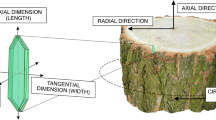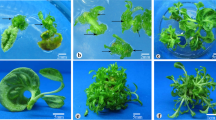Abstract
IT has been shown that the removal of the rhizome apex in the ostrich fern (Matteuccia struthiopteris) and in Onoclea sensibilis is attended by bud development at specific positions along the rhizome. These positions are occupied by superficial areas of meristematic cells, or detached meristems, which at an earlier stage formed part of the apical meristem. Those buds which arise in older regions of the rhizome have no vascular connexion with the shoot stele1,2.
This is a preview of subscription content, access via your institution
Access options
Subscribe to this journal
Receive 51 print issues and online access
$199.00 per year
only $3.90 per issue
Buy this article
- Purchase on Springer Link
- Instant access to full article PDF
Prices may be subject to local taxes which are calculated during checkout
Similar content being viewed by others
References
Wardlaw, Ann. Bot., N.S., 7, 26 (1943).
Wardlaw, Ann. Bot., N.S., 7, 28 (1943).
Author information
Authors and Affiliations
Rights and permissions
About this article
Cite this article
WARDLAW, C. Bud Regeneration at Cut Parenchymatous Surfaces in Onocleoid Ferns. Nature 153, 588–589 (1944). https://doi.org/10.1038/153588a0
Issue Date:
DOI: https://doi.org/10.1038/153588a0
Comments
By submitting a comment you agree to abide by our Terms and Community Guidelines. If you find something abusive or that does not comply with our terms or guidelines please flag it as inappropriate.



